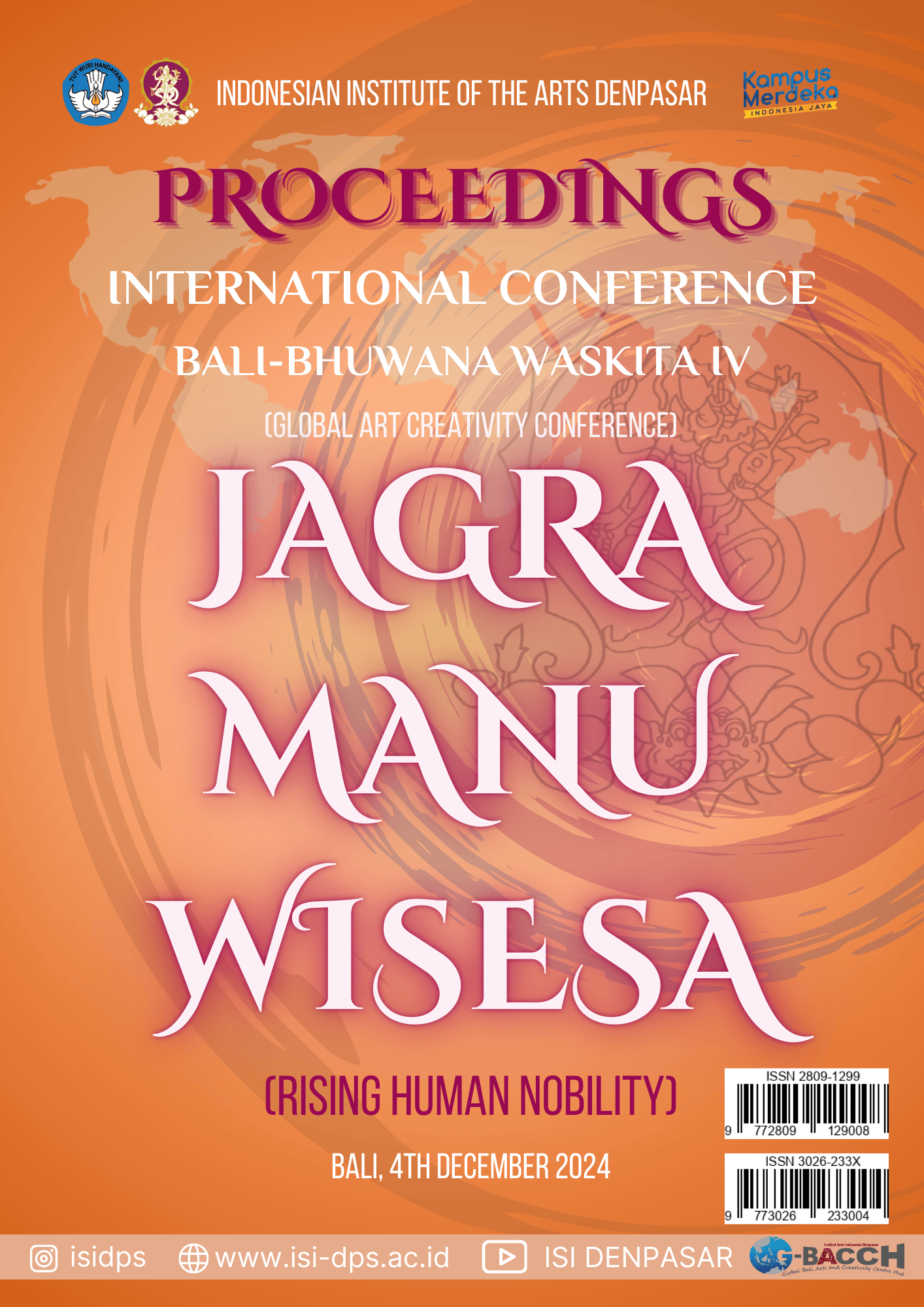DESIGNING CHILDREN'S PARTY WEAR MADE FROM TRADITIONAL ENDEK TEXTILES
Main Article Content
Abstract
The children's fashion industry in Indonesia has great potential but is still dominated by imported products. This constraint is the trigger for this research that aims to explore children's clothing that is high quality, comfortable to wear and utilizes traditional Balinese fabric, Endek, as well as an effort to introduce culture from an early age. The process of making children's clothing is designed through the five main stages of the Frangipani method which consists of: idea development, research, aesthetic element analysis, design sketch, and production. Making quality children's clothing requires several criteria including safety, comfort, durability, size accuracy, and cultural sensitivity to be the main focus in design development. Endek fabric was chosen as the catalyzing idea in the design of children's party wear. Endek fabric is the most common and desirable fabric in Bali because of its motif design development. Endek fabric as part of the ikat woven fabric requires special attention in the process of processing it into clothing to maintain the quality and structure of the fabric. The addition of elements such as lining and interfacing is done to increase the comfort of the clothing. This research shows that children's fashion with Endek fabric can fulfill the criteria of modern children's fashion but is able to maintain cultural values. This research provides reference and insight for children's fashion industry players in creating products that collaborate traditional aspects and modern demands so that they can compete globally.
Article Details

This work is licensed under a Creative Commons Attribution-NonCommercial-ShareAlike 4.0 International License.


